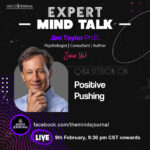I was recently interviewed by an Australian sports magazine and, though it focuses on endurance sports, the interview is clearly relevant to athletes and coaches in all sports.
What unique challenges present the athlete of endurance or multi-sport events?
In the case of single endurance events, such as marathoning, the unique challenge is keep the mind strong and in control when the body begins to break down and rebel against continuing. Late in long races, for example, after 20 miles of a marathon, the body says, “I get the point, we can stop now.” It communicates this message loudly in the form of pain. If the mind gives in to those messages, then you will slow down or stop, thus immediately failing to achieve your goal. But if you can ensure that the mind resists those messages and commands your body to keep going, then the body will respond (assuming sufficient fitness and manageable conditions) and you will reach your goal. Multi-sport events have that same challenge plus the demands of having to master and focus on several different skillsets and physical demands. For example, triathlon requires that you master three different sports (swimming, biking, and running), handle effectively the difficulties of the transition, fuel well with food and drink throughout the event, deal with mechanical problems on the bike to boot.
Which strategies have you identified as most beneficial to addressing these performance inhibitors?
The single most effective strategies for dealing with the physical and mental challenges is preparation. When I work with athletes who have a specific race goal, I want them to be able to say to themselves at the start line, “I’m as prepared as I can be to achieve my goals.” Not only does quality preparation ensure that you will be up to the physical demands of the event, but, just as importantly, you will have developed the motivation, confidence, focus, and emotional tools to handle the mental demands of the race as well.
How relevant is personality to the selection of strategy or method used?
Personality is a rather amorphous quality. We can’t change personality (and there’s even some question whether we each have only one unique entity called a personality). At the same time, most of us naturally adopt training and race strategies that fit our personality. For example, some of us like to train alone, while others like to be a part of a group. Some like to be alone before a race to focus on their preparations, while others like to socialize to be keep their minds off of the race and stay relaxed. Over all, though, I focus more on psychological attributes (e.g., motivation, confidence, intensity, focus, emotions) and mental tools than personality.
When is intuition more important than strategy (in relation to pushing past your limits)?
Intuition is a double-edged sword. If you are a seasoned endurance athlete with years of experience under your belt then intuition can be useful and perhaps even trump strategy. But there is a risk that the intuition, for example, to pick up the pace early in a race because you feel good, is based more on immediate feelings rather than what is best for later in the race when it really counts. Many “newbies” make this mistake and change their race plan midrace and the end result is usually not good. Pushing past your limits should occur in training, not races. In races, you should simply race up to the limit of what your current fitness will allow you to do. I encourage athletes with whom I work to develop a race plan based on their fitness and then have a plan B if problems arise (e.g., need to slow down because of a headwind on the bike) and a plan C of going faster if they are feeling good late in a race.
What is the value of intrinsic motivation and how does it work?
Intrinsic motivation for most endurance athletes should be the only reason to be out there. For Olympic and professional endurance athletes, extrinsic motivation, in the form of the money and fame, can help a little, but even for those athletes, what ultimately drives them comes from deep inside. Parents often provide extrinsic motivation for young athletes and this external push can range from helpful to destructive. Ultimately, for most endurance athletes, they should be out there because they love the sport, enjoy the challenges, and gain fulfillment from working hard and achieving their goals.
For high stress conditions how do you advise athletes prepare?
Preparing for adversity in training is the only way to succeed in the face of adversity in a race. Difficult conditions are not really the issue in a race because everyone has them. The key is how people respond to them. If you have two athletes of equal ability and one sees, for example, rain and wind as a threat that scared and intimidates them and the other as a challenge that they know they can overcome, the latter athlete will be more successful. Training for adversity has two benefits. First, you gain experience in how to adapt the adversity, so in a race, you can make necessary adjustments to, for example, your cycling or running pace in a headwind. Second, you develop the confidence that you can overcome these challenges so that, in the race, you are motivated and excited when confronted by them.
What have you discovered works best for managing emotions?
Endurance sports bring out the most powerful emotions because, late in a race when the body begins to break down, our emotional defenses get peeled away and we feel emotions more acutely than during most other times in our lives. Those emotions can range from very negative (e.g., anger, frustration, despair) to very positive (e.g., inspiration, pride, elation). The first thing is to accept that all emotions are a normal and healthy part of the endurance-sport experience. Second, to explore the cause of the emotions. Having a Ph.D. in Psychology, I believe that all emotions, especially negative ones, tell us something about what’s going on in our lives. We should consider those race emotions after the race and examine what they mean to us. During the race, emotions can tell us something about how we are doing at that point. For example, it’s common between 60-90 miles of the bike in an Ironman triathlon that you will experience an emotional crisis. This is the point in the race when it hits you that you’ve been out there for many hours already and you are really tired and in pain, yet you also have many more hours (and a marathon!) ahead of you. Sadness and despair are typical here. Experienced Ironmen know two things about this “pit of despair.” First, it will pass at about 90-100 miles as the end of the bike comes into sight. At that point, a sense of relief and elation are common. Second, an emotional crisis is often associated with a nutritional crisis; when you feel that way, force yourself to eat and drink. These same ideas can be applied to any powerful emotional experience in an endurance event.
Can mental training help enhance recovery for improved performance?
Absolutely. Part of mental training is having the discipline to allow yourself to recover. Too many highly committed endurance athletes come back to intense training or another race too soon. They don’t allow their bodies and minds to recovery from the damage incurred. After a significant effort, the best thing to do is to direct your focus onto some other valued aspect of your life that you may have sacrificed for your training and race preparations, for example, relationships or hobbies. Also, relaxation exercises can speed the physical recovery. And mental imagery of future races can keep your mind sharp and focused while the body recovers.
What role should a coach or trainer play in developing & implementing these techniques in practice?
Ideally, the coach or trainer has experience with the mental aspects of the sport and can build mental training into your regular training, for example, the use of positive self-talk during track intervals or focusing skills when working on technique. Unfortunately, it has been my experience that few coaches or trainers have that kind of awareness or knowledge of the psychology of sport. It is best to seek out such information yourself in the form of reading, lectures, or direct work with a sport psychologist and then incorporate those strategies into your training and races.
How can athletes prevent their drive for success to lead to overtraining or burn out?
I often work with endurance athletes who are overly motivated; too far or too hard isn’t far or hard enough and recovery is for wimps. Ultimately, these athletes will end up injured or burned out. To combat these attitudes, you must realize that rest and recovery are essential parts of training. I encourage mandatory rest days, required time away from the sport following a big race and, very importantly, for athletes to listen to their bodies. When you are usually very motivated, but on any given day, feel tired and sluggish, you will gain more from taking the day off or doing only a light workout than trying to grind through a hard workout.
How often do athletes overthink a situation and is there any merit to the saying “No brain, no pain”?
Many people think that to be an endurance athlete you have to be either crazy or stupid to endure such pain for so long. But most endurance athletes I’ve met and worked with are very intelligent people. The reality is that stupid or crazy people don’t last long in endurance sports because they either get seriously injured or burn out fast. The downside to intelligence is the tendency to overthink, but only a certain kind. I believe that endurance sports require considerable thinking because they are so complex and so demanding for so long. You must be constantly thinking during training and racing to monitor what is happening. The danger of overthinking is when that thinking shifts from process (i.e., what am I doing now to maximize my performance?) to outcome (i.e., what if I win, or lose, or don’t finish, or get beat by my buddy). Overthinking about outcome causes anxiety, distraction, and doubt, all of which will hurt your performances. As for the adage, “no brain, no pain,” I just don’t think that works in the long run. The reality is that you can’t avoid pain for very long; the body just screams louder and louder until you listen. Ideally, you should use the pain as information to make changes during training and races. Do I need to slow down? Do I need to adjust my body position? Is this injury pain? Does this pain mean I’m working hard and achieving my goals? Pain can be either a powerful tool for race success or a dangerous weapon for race failure. How you think about it determines which it is.
When it comes to dealing with failure or past defeats what is key to remember?
Simple: lessons learned. When you have a bad race it’s natural to be disappointed, but staying that way will only prevent you from overcoming the failure in the future. After a few days, the bad feelings will hopefully pass and then you can ask yourself: What went wrong? With that knowledge, you can make changes in your training or race tactics so you don’t make the same mistake again.
Do you have a preferred method of dealing with distractions?
There are several ways to deal with distractions. But first you have to understand how they work. Distractions usually come from a worry or concern you have, whether the conditions, a rival competitor, or a problem you’ve had in the past. Also, you can’t just not think about a distraction (try not thinking about a pink elephant). First, if the distraction is a problem you have had, find a solution. Problem solved, no more distraction. Second, find something else to focus on rather than the distraction (so think about a blue hippo). We, as humans, can’t focus on more than one thing at a time, so if you’re thinking about a blue hippo, you’re not thinking about a pink elephant.
What are top ten barriers to performance and & can you list their constructive counterpart?
Here goes: 1) Low motivation in training: finding a deep reason to want to work hard and prepare well; 2) Lack of confidence: quality preparation, exposure to adversity, seeing progress in training, support from others, positive self-talk, and incremental success; 3) Anxiety: relaxation techniques, deep breathing, music, having fun, focus on the process rather than the outcome; 4) Distractions: mental imagery, keywords, reminders written on your equipment; 5) Negative emotions: understand where the emotions are coming from, reconnect with positive emotions related to why you enjoy training and competing, look to others for inspiration; 6) Pain: use pain as information to make changes, connect pain with positive thoughts (e.g., this means I’m working hard toward my goal) and positive emotions (e.g., inspiration, pride); 7) Poor preparation: quality coaching, structured training program, others to train with; 8) Going out too hard: have a race plan based on your fitness level, staying focused and disciplined in your pace early in the race; remembering the race doesn’t really start till much later (e.g., 85 miles of the bike in an Ironman, 20 miles in a marathon); 9) Injuries: get diagnosed soon and correctly, stick with your rehab program no matter how good you feel, think long term, be patient; 10) Overtraining: mandatory rest day, periodized training, listen to your body. Wow, I did it!
Can you tell us about The Power of Prime and how it can help athletes experience more joy and better results for their efforts?
The Power of Prime is a concept that I developed that is the foundation of my work with high achievers in sports, business, medicine, law, and the performing arts. It involves three essential ideas. First, prime performance, which I see as very different from the popular goal of peak performance. I define prime performance as performing at a consistently high level under the most challenging conditions. Second, well being, which involves achieving three states: physical health, life balance, and happiness. After a life of high achievement in sports and business and a work focus in helping people reach their highest levels of success, I have learned that success without well being isn’t success at all. Much of my work now is on helping people find both success and well being. Finally, change, which lies at the heart of all efforts toward achieving success and well being. I have developed a model for how people change and a process for encouraging change.
To read more about the psychology of sport, click here.






